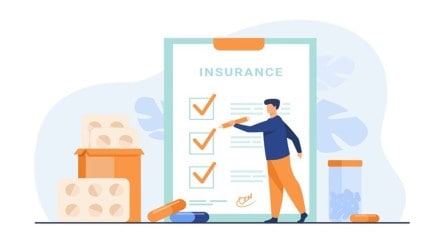By Sanjiv Bajaj
In the rush to build wealth, what often gets neglected is your insurance portfolio. If you are like most Indians, you likely bought your first life insurance policy in your late 20s or early 30s. Maybe it was a bundled endowment plan. Maybe it was a term cover recommended by your HR or a relative in the insurance business.
You signed the papers, paid the premiums, and tucked it away—like a safety net you hoped you’d never have to use. But a decade or two later, that safety net is fraying—your income and responsibilities have grown, your health risks have changed, but your cover is still stuck in the past.
Life insurance
Mid-life is when you are likely earning your highest income—and simultaneously shouldering the greatest liabilities such as EMIs, tuition fees, medical bills. Ask yourself: If something happened to me today, would my term cover be enough for my family to clear debts, maintain their lifestyle, and meet future goals?
A good rule of thumb is to have life cover worth 10–15 times your annual income, especially with kids or loans. Also, review your nominees and add key riders—because life insurance protects the future your family must live, not the past you planned for.
Health insurance
This is the decade when India’s biggest health shocks arrive and for most Indian families, a single hospitalisation can wipe out years of savings. If you still have a Rs 5 lakh base policy or rely solely on your employer cover, it is time to rethink.
Upgrade your base health cover to Rs 10–25 lakh, depending on city, family size, and hospital preferences. Invest in top-up or super top-up policies and add critical illness policies that offer lump sum payouts for conditions like cancer, bypass surgery, or stroke.
Secure health insurance for parents separately—senior citizen policies are more expensive but essential.
Your child’s future needs
Every Indian parent dreams of giving their child the best possible future—be it in medicine, management, or even music. But college fees are climbing faster than inflation, and most education savings plans are not immune to market or health risks.
The two golden rules: Pair every goal-based savings plan with life insurance. This way, if something happens to you, the dream doesn’t die with the breadwinner. Choose a waiver of premium rider—this ensures the insurer continues paying the premiums if the policyholder is disabled or no longer around.
What smart mid-lifers are doing differently
Today’s informed policyholders don’t just buy insurance—they manage it. They review their coverage regularly, store policies digitally, choose advice over sales, and most importantly, ensure their families know what’s covered and how to claim it if needed.
Mid-life is not a crisis. It’s a checkpoint. It’s your chance to realign your protection with your priorities.
The writer is joint chairman & MD, BajajCapital
Disclaimer: Views expressed are personal and do not reflect the official position or policy of FinancialExpress.com. Reproducing this content without permission is prohibited.
